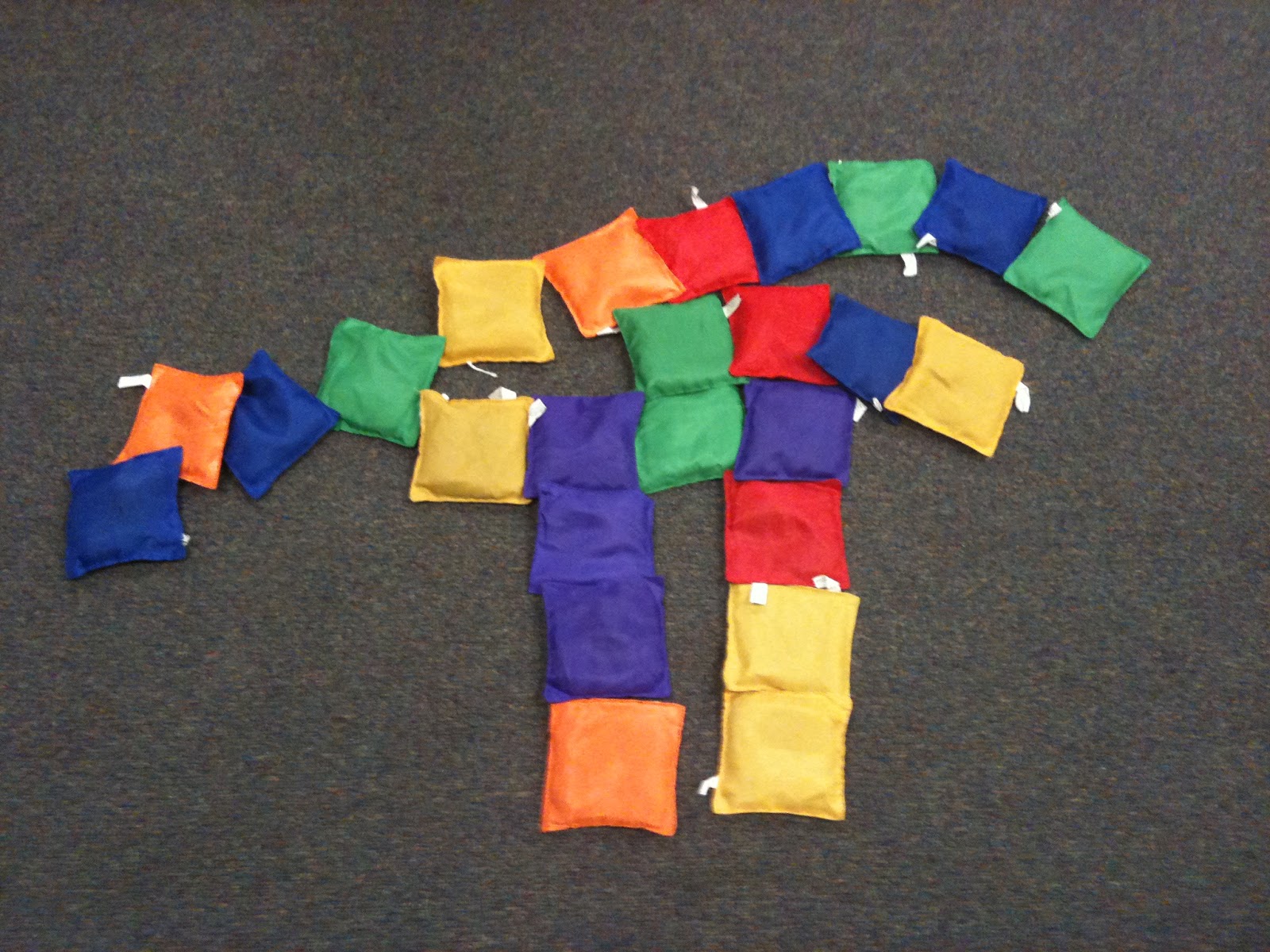To sum up, Pezzetino (meaning "little piece" in Italian) is a little orange square living in a world full of characters who are much larger and colorful. He wonders if he might be someone else's little piece but by the end of the story, he discovers that he is perfect just the way he is. Sigh. I hope that children really receive this message when I share it with them.
I have taught this story to students from Kindergarten through 3rd grade and they are just as charmed by it as I am. I read the story, showing the pictures and singing a little song with my students along the way. After that, it is time for them to create!
Spurred on by Lionni's inspiration, I divide my students into small groups and hand out classroom materials (scarves, cups, index cards, rainbow resonator bells, magnets, etc.) for them to create their own characters who might live in Pezzetino's world. I take pictures of their work then share them with the whole class the next time I see them. Then. again referring back to Lionni's use of names that describe the characters such as "The One Who Runs" and "The One On the Mountain," we discuss possible names for the characters they created in their groups. Ultimately, I print out their pictures and present their teacher with this newly created version of the story.
So far, I have been unsuccessful with my attempts at using the color patterns in a more musical way. I would like to use color patterns from the characters as a graphic score for music making. For example, the greean/blue/purple/black color palette of The Swimming One could represent four different instruments or pitches. This is something I'll keep working on. Meanwhile, in her book Blue Is the Sea, Orff master teacher Sofia Lopez-Ibor suggests using the characters in Pezzetino as inspiration for movement. There are many possibilities here.
Here are some of the characters my students have created:
Thanks for visiting! Don't forget to visit my store at Teachers Pay Teachers for other ideas!





